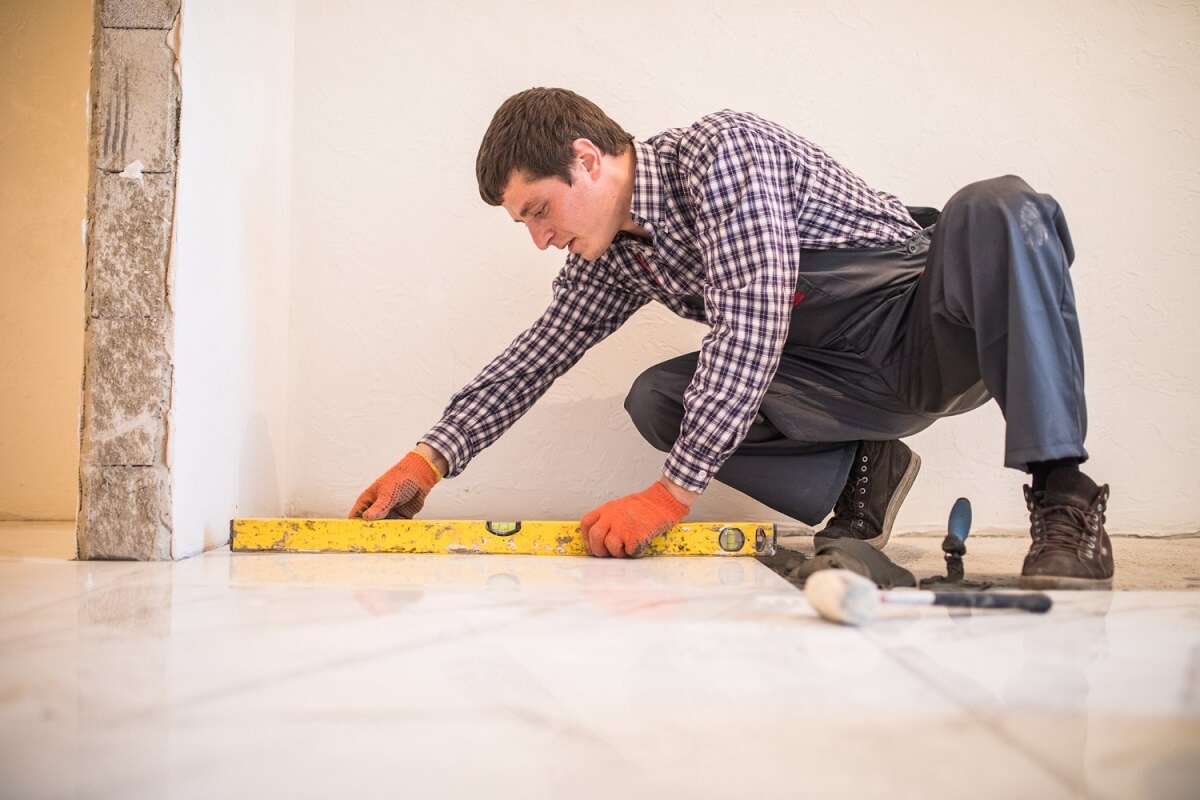How Do You Figure Out How Many Floor Tiles You’ll Need?

Floor tiles play a crucial role in interior design, offering various colour, style, and texture choices. They are an indispensable element that can transform the look and feel of any space. When it comes to improving the look and functionality of a room, installing floor tiles is a great option. Not only do they add to the overall aesthetic appeal of the space, but they also offer practical benefits such as easy cleaning and durability. Tile calculation is crucial before starting the installation process. When buying tiles for your flooring project, you must balance purchasing enough tiles and not overspending. Running short on tiles can result in an unfinished or flawed floor, so it’s crucial to ensure you buy the right amount of tiles for your project.
Tile Calculation Made Easy: How to Determine the Number of Floor Tiles Needed for Your Project:
Step 1: Measuring The Floor Area:
Measuring the floor space is the first step in Tile calculation. Using a measuring tape, you may get accurate measurements of the room’s dimensions in feet. Measure the room’s most extended and broadest sides for precise dimensions. Using the room’s length and breadth measurements, you can calculate its total square footage. If a room is 10 feet long and 12 feet wide, the total floor space is 120 square feet (10 x 12).
Step 2: Determining The Tile Size:
The next step is to choose the tile dimensions. Different sizes of tiles are available. However, the most frequent ones are 12″x12″ (30.5cm x 30.5cm), 18″x18″ (45.7cm x 45.7cm), and 24″x24″ (61cm x 61cm). The square footage of the tile may be calculated by measuring its length and breadth and multiplying the results. For 12″x12″ tiles, for which the square footage is 12 times 12 times 144 divided by 144, a single tile would cover 1 square foot.
Also Read: Which Is Better: Marble Stone or Marble Tiles for Your Floor?
Step 3: Accounting For Wastage:
During tile calculation, it is crucial to factor in the inevitable waste that will inevitably occur. Tiles may be well-spent if they break during installation, must be trimmed to fit around corners, or if the floor isn’t perfectly flat. The standard rule of thumb is to double the square footage to allow for waste. In the case of a 120-square-foot space, an additional 10% would bring the total to 132 square feet.
Step 4: Calculating the Number of Tiles Required:
Tile calculation needed for your flooring project is essential in ensuring a successful outcome. Once you have measured the floor area, determined the tile size, and accounted for wastage, you can easily choose the required tiles. This will help you accurately estimate the cost of your project and ensure that you have enough tiles to complete the job. Calculating the tiles needed for a flooring project is essential in planning. To determine the number of tiles required, divide the total floor area, accounting for any wastage, by the square footage of each tile. This calculation will provide an accurate estimate of the number of tiles needed to complete the project. Calculating the tiles required for your flooring project is essential in planning. To determine the number of tiles required, you need to know the total floor area and the size of each tile. For instance, if your floor area is 132 square feet, and each tile measures 1 square foot, you will need 132 tiles. Divide the total floor area by each tile’s size to get the required tiles.
Also Read: How to Maintain the Shine of Your Tiles
Step 5: Purchasing Extra Tiles:
When it comes to tiling, it’s essential to plan. One bright tip is to buy extra tiles beyond what you need for your current project. This way, you’ll have some on hand for any future repairs or replacements that may be necessary. It’s always better to be prepared! When buying tiles, getting a little extra is always a good idea. As a general rule, we recommend purchasing an additional 5-10% of the total number of tiles needed. This will ensure that you have enough tiles to cover any mistakes or unexpected issues that may arise during installation. Plus, having a few extra tiles on hand can be helpful in case you need to replace any damaged tiles in the future. So, next time you buy tiles, remember to factor in that extra 5-10% to ensure your project goes smoothly.
Conclusion:
At Tile Trolley we believe that there is a straightforward mathematical method for determining the number of floor tiles needed for a given area, given the measurements of the floor and the tile size. Accurately area to be tiled and accounting for waste and extra tiles needed for cutting and pattern matching is also crucial. Counting floor tiles for a project is simple if you follow these instructions and have the right equipment.

